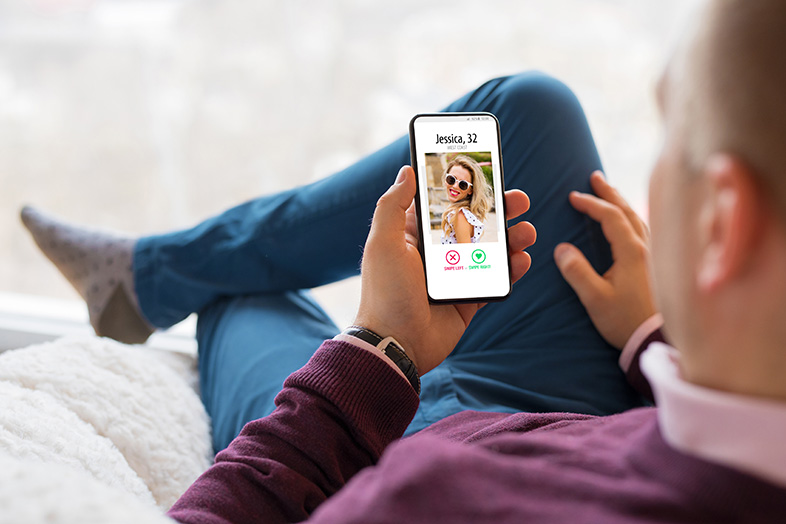A lot of research in recent years has exposed the health problems caused by smartphones that nearly everyone seems to carry these days. Yes, smartphones cause distractions that can lead to motor vehicle accidents. Yes, smartphones can leave people—particularly teens—open to several psychological impacts, including bullying on social media and exposure to misinformation.
But what if you can use smartphones to create safer workplaces? Researchers at the University of Wisconsin-Madison have worked on doing just that, like other scientists and app developers.
Preventing Repetitive Injuries? There’s an App for That

According to an article published by Science X Network, researchers from UW-Madison, led by Rob Radwin, a professor of industrial systems of engineering, have studied the health risks facing factory workers for several years. As noted by the U.S. Census Bureau, the manufacturing industry is still one of the top employers in the U.S., with 11.9 million employees working in factories.
Manufacturing also accounts for six out of every ten export dollars earned by the nation, indicating a high need for factory workers. While these jobs provide a steady source of income for workers and many communities’ economies are built around manufacturing, the work carries a high risk of repetitive injuries.
What Are Repetitive Injuries?
Repetitive injuries involve damage to the body’s soft tissues—including ligaments, tendons, muscles, and cartilage—as a result of repeating the same motion again and again for extended periods. Common types of repetitive motion injuries include carpal tunnel syndrome, which causes inflammation in the wrists and joints due to keyboard work or work performed on assembly lines.
Repetitive motion injuries can also involve the arms, shoulders, and back, leading to chronic pain and massive inefficiencies for the companies who employ these workers and are later faced with worker’s compensation claims, workers experiencing lost time from the job, and diminished productivity. “We want to solve these problems before people get hurt,” Radwin explained in an interview with Science X Network.
The National Safety Council reports that injuries involving overexertion—including repetitive motion injuries—are the second-leading cause of occupational injuries resulting in workers’ compensation claims, accounting for more than 255,000 injuries a year with an average of 14 days of work lost per injured worker.
How Can a Smartphone App Help Reduce Repetitive Injuries in Factories?
After studying the issue of repetitive motion injuries in factory workers for years, technology finally caught up with Radwin’s thinking. It enabled him and his team to discover what he believed to be a solution for preventing those types of injuries before they even began through the use of a smartphone app.
Existing methods of measuring a worker’s risk of acquiring a repetitive motion injury have been less than satisfactory, often requiring health and safety professionals to assess the risk subjectively, using a 0-10 scale. There is ample room for human error in the assessment, and evaluating the motions required in a factory position takes time and money that companies often spend on other aspects.
Radwin’s team partnered with Yu Hen Hu, an electrical and computer engineering professor at UW-Madison, to develop computer vision algorithms to calculate hand activity levels. These observations establish a new measure for assessing health outcomes in positions requiring repetitive hand motions. The calculation uses video footage to visualize and track hand motions, establishing pattern recognition. This pattern is then combined with epidemiology findings to create a basis for engineers to measure the risk of injuries and redesign certain jobs in the workspace to prevent these injuries.
For Radwin, however, the task is not only to create new measures for assessing risk but also to create a smartphone app that would allow factory employees to have the opportunity to assess their own risk. It would involve simply pointing a handheld video device rather than requiring the employee to wear an instrument attached to their arm or hand.
“We can program phones to measure motions and quantify them in a way that is not only more accurate than the current method but also automatic and more objective and reliable,” Radwin noted.
What Other Smartphone Apps Can Reduce Workplace Injuries?
Radwin’s novel way of calculating the risk of a worker incurring repetitive motion injuries is helping to make factory work in Wisconsin safer, but this is not the only smartphone app designed to create a safer workplace. According to commercial insurer Chubb, many workplace safety apps are now available to help managers and employees measure noise hazards, promote ladder safety and safe lifting, and provide guidance on securing hazardous materials.
Smartphone Safety Apps for Construction Sites
Occupational Health & Safety (OH&S) Online reported that communication is critical to safety at construction sites, allowing workers to coordinate the movement of the material and communicate hazard warnings to their colleagues.
However, past construction communication devices, such as radios, only let one person communicate at a time, and are handheld, meaning the worker cannot communicate while performing tasks that require both hands. Many of these devices need the worker to push a button to talk and come with wires that can get tangled up while the employee performs work-related tasks.
Smartphones allow simultaneous communication between multiple parties, without wires and without the worker having to hold or press the device. Smartphone apps can also enable construction managers to check in on the progress of work done remotely. Workers in two job sites can coordinate and communicate with one another, and employees can also access an app to provide employees with important safety training.
Smartphone Use in Nursing
According to a Canadian study conducted by the faculty of health sciences at the Arthur Labatt Family School of Nursing of Western University, nurses are another group of workers adopting smartphone technology to enhance communication and patient and worker safety. There are currently more than 200,000 health-related apps available for smartphone users, including many free options, combined with a proliferation of electronic documentation systems that provide a repository of accessible resources for healthcare providers.
Nurses’ adoption of personal smartphones as a workplace tool came about during the COVID-19 pandemic when the healthcare industry was overwhelmed by staff shortages and a sharp increase in patients needing specialized care. Healthcare organizations had to adapt quickly to the onslaught, and the this adaption occurred because of the personal smartphones of nurses and other healthcare workers.
Some of the reasons why nurses were using their smartphones for work-related tasks during the pandemic included:
- Accessing clinical information to assist with patient care. The most common information accessed from smartphones used by healthcare workers was information about medications, including drug guidelines and references. Nurses found it easier to search for guidance about medications on their smartphones than using drug reference books.
- To look up diseased-related information, including procedural details about surgeries and anesthetic procedures.
- Communicating with colleagues for clinical purposes. Surgical nurses often turned to the app BAND on their personal devices to share information with each other. The data was readily available and easily accessed. Some facilities preferred the app Viber, which enabled doctors to share patient care orders with the nursing staff.
- Information seeking on behalf of patients or for their educational purposes. Nurses often found that it was easier to share information with patients accessed from their smartphones when they had to answer specific questions about medical procedures, medications, the contact information of providers, and directions to local venues.
- Using online, evidence-based guidelines to support patient care.
- Using smartphone apps to communicate with home care patients, including video conferencing apps, videos, and photos.
While the evaluation of research into the use of smartphones in nursing uncovered several areas in which apps enhanced or informed the care professionals were able to provide to their patients, there were also several areas of concern identified in the use.
Healthcare managers expressed concern that accepting personal smartphones in the workplace would result in nurses being distracted by their phones. They also worried that patients would have negative perceptions of healthcare providers who were communicating with others about their medical conditions on an app.
Along with that, there were real concerns about the exploitation of patient privacy because of the presence of identifying information readily available on healthcare staff’s personal phones.
Apps to Handle Workplace Safety
As explained by Metalphoto of Cincinnati (MPC), many apps address specific areas of workplace safety, such as:
- The First Aid app, offered by the American Red Cross, can provide step-by-step instructions on handling workplace accidents and mishaps. This free app is available in English and Spanish and features 911 connectivity and assisted video learning on safety topics.
- A Heat Safety app provided by the Occupational Safety and Health Administration (OSHA). This app allows workers and supervisors to compute health risk levels, prompt users to wear protective gear, and remind them to take breaks and drink water throughout the day. The app calculates the heat index of the work area and provides a list of symptoms of conditions related to heat exposure.
- An Ergonomic app that helps workers who sit for most of their workday avoid the health risks associated with sedentary lifestyles. The app features exercises that workers can perform in the workplace and prompts users to take breaks and move around at regular intervals.
- The Noise Sniffer app helps workers to detect dangerous noise levels that can cause damage to their hearing. The app detects noise levels and provides a decibel readout, producing warnings if the noise level exceeds 60 decibels and workers are at risk.
- The Chemical Hazards Pocket Guide is an app that helps first responders identify chemical hazards to protect themselves and others. Each chemical has its aliases and trade names listed in the app. Information also contains physical descriptions of the substances and whether the chemical is dangerous to inhale or flammable. The data is available even if the smartphone is offline.
- The Fatigue Predictor app uses the Individual Fatigue Likelihood Score (IFLS) to determine whether workers are at risk for mild to severe fatigue, allowing managers to flag employees for specific duties or dismiss them from work to obtain needed rest.
How Workers Feel About Smartphones on the Job

According to Zippia, around two-thirds of Americans regularly use their smartphones at work, and highly mobile employees spend at least 35 percent of their workday on their phones. Eighty-seven percent of employers now expect employees to use their personal devices for work.
Most employees say they would use their smartphones for work instead of desk phones at the office. Some of this preference is likely related to their familiarity with the phone and the ability to conduct work away from their desk or even away from the office entirely. More than half of employees use company-mandated apps to work on their smartphones.
While the fear of distraction from phones is not unique to the healthcare industry, managers and executives who allow smartphone use in the workplace report a 34 percent increase in productivity. However, other concerns remain, including security breaches, increases in workplace errors that are more likely to occur immediately after the worker has received a phone call or a text from their device, and the distraction of personal messages as work and life combine.
After a workplace repetitive motion injury, consult a personal injury lawyer who can answer all your questions and assist you with every step.